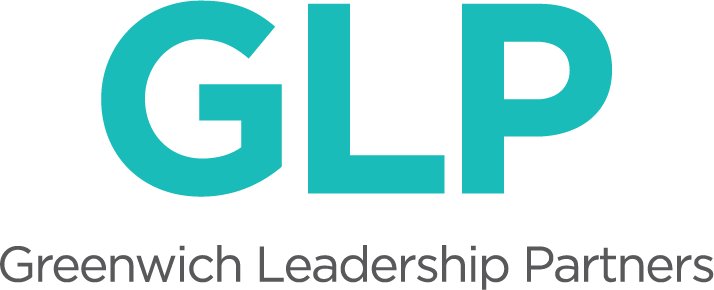By Georgy Ann Peluchiwski
Fall for leaders, like students, is often a time of mixed emotions: renewal, excitement and trepidation. New and seasoned leaders spend summers reflecting and making plans for the coming year. They return with high expectations and optimism, energizing their teams and engaging their boards in the work ahead. With the lingering shadow of COVID, workplace, political and social tensions, the stakes feel higher than ever for leaders as they attend to the needs of students, clients, and communities they serve.
For boards and leaders, the fall ritual of coming back together often includes the annual (and sometimes dreaded) goal setting exercise. Unfortunately, we hear from schools and organizations when early excitement and hopes that “this year will be different” turn to disappointment and frustration. So what is going on?
For schools in particular, my hypothesis is that the mounting pressures on boards and leaders are creating unintended consequences for this process, and that without well constructed and agreed upon practices, miscommunication and misunderstandings result. In the whirlwind of “back to school,” the pressure to establish goals incentivizes “getting it done.” However, slowing down to create healthy practices can turn goal setting into a platform for deeper dialogue, learning, and exploration of “the work that matters most.”
Here are a few examples of the types of questions we hear from leaders: “What does my board really want from me? I got a whole list of things written for me that are not reflective of the depth of work I need to do to make it happen. Why aren’t they talking to me about my goals? How will they evaluate my success? Why do they meet without me to discuss my goals and performance? How will they offer me feedback? What does this mean for my continued employment and compensation?”
When we hear from boards, they too voice frustrations, such as “Why can't our leader develop good, measurable goals? How will we hold our leader accountable? We received goals, but we need metrics or a dashboard! What should we be asking/telling them to do anyway? Without metrics how can we measure progress? Who is responsible for drafting the goals? Running the evaluation? Who should weigh in?”
Boards today are in a tough place simultaneously being told that they need to hold leadership accountable, that they are to stay out of operations, AND that they are “partners” in the work. Layer onto that increasing and often divergent perspectives and pressures from stakeholders, employees, parents, faculty, and students. The work of governance and leadership has never been more complex or more important.
Bowing to the pressure, boards can easily find themselves defaulting to drafting long lists of goals to present to their leaders and passionately advocating for discrete measurements such as program or school enrollment, fundraising, and for schools, college (or high school) placement. These are essential outcomes, but leaders have to do a lot to make these happen. The conversations seem to miss a step, and leaders can feel frustrated and misunderstood.
Historically, boards in their quest for “metrics” default quickly to easily observable and quantifiable measures like the ones I list above. The essential problem is that these are all “lagging indicators” of success. For example, by the time enrollment or fundraising decline, you are likely years away from the underlying problem and the corrections required to impact trends. You have likely overlooked the real drivers of success: a relevant and valuable mission and value proposition, and a client/student experience that is delivered with excellence and consistency.
I read with interest the recent article from RG175’s Tom Olverson, “I Hate Head of School Annual Goals: Here’s Why” as it spoke directly to the challenges outlined above and advocated for a multi-year approach – very sound advice. I also appreciated his guidance for any leader as they navigate this process.
Reflecting on this piece, I was left thinking about what messages we at GLP might offer to boards as most essential to avoiding the scenarios above. We offer six tips for boards and leaders looking for guidance:
Start by talking to each other. Sounds simple, but this is often the step we see skipped or bungled. Enter the goal setting process in a spirit of partnership and collaboration. Talk less and listen more. Goal setting should be a joint endeavor with the leader. Boards should not “present” goals to the leader, nor should leaders be drafting in a vacuum and “presenting” to the board. Begin with a dialogue about what your shared priorities are, how that will inform the work of leadership, AND the work of governance. Boards should also be asking their leaders what they need and expect and should hold themselves accountable for delivering.
Define the process. This includes outlining the roles, responsibilities, and timelines for setting goals – best developed together with your leader. If the process is clear, well defined, and well communicated, it allows the focus to be on the quality of the dialogue and reduces anxiety on all sides. Thus, high functioning boards have structures, and practices to support a healthy goal setting and evaluation process.
What is good for the goose…! Boards also benefit from goals, feedback, and assessment. Goals setting and evaluation processes are as essential for boards as they are for leaders and the key to continuous improvement.
Ground your work in mission and strategy. Use your strategic plan, vision, mission, and values to agree to shared enterprise wide priorities. Then carefully delineate what the work of the board will be to support the work of leadership and what work the board needs to attend to itself in order to ensure institutional progress.
Measure activities that drive performance - and the success you envision! Once you have an understanding of your priorities and who will do what, consider what evidence you will seek to demonstrate progress, and how it will be measured and communicated. Know the difference between leading and lagging indicators and set realistic timeframes. Take the time to listen and learn from your leader. Ask: “what do they see as drivers or leading indicators of progress towards success?” Consider that the most valuable “metrics” might be qualitative, but can be measured or tracked.
Create and sustain frequent feedback loops. Consider that informal, ongoing, and “formative” feedback is just as valuable, if not more, than a formal year-end evaluation or “summative” assessment. Be sure you are attending to both in an intentional way. This is the surest way to build a trusting and enduring partnership that drives institutional success.
We would love to hear your thoughts! Let us know what we missed, or what you would like to hear more about.

